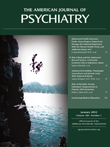Henry's Demons: Living with Schizophrenia, A Father and Son's Story
Remember Pete Earley's book, Crazy: A Father's Search Through America's Mental Health Madness? Earley, a former Washington Post journalist, tells the story of his son, who suffers with a psychotic illness, and the madness of America's mental health (and correctional) system. There is nothing quite like having a top-notch professional journalist on a mission to deliver a compelling story. We now have another fine journalist who brings us into the world of mental illness, family, community, and the mental health system—but from across the Atlantic, in the United Kingdom, via Henry's Demons.
Through alternating father and son chapters, Henry's Demons depicts Henry Cockburn's descent into and slow emergence from severe mental illness. His father, Patrick, is an accomplished war reporter for the Financial Times and the Independent whose life is forever changed by his son's mental illness; he wrote the majority of the book. Henry was the first of two boys in the Cockburn family, where the mother was a college professor who cared for the boys, while the father was usually at far-off and dangerous war zones. Henry was a creative child who never quite fit in with his peers, and he smoked a lot of marijuana as a teenager (”too much,” he remarked).
Through father and son, we enter the world of mental illness in personal and painful ways. However, memoirs are now common, and suffering is often their métier. What distinguishes this book are the plethora of lessons learned, none delivered in didactic or pedantic ways but instead through narrative and experience. I recommend this book to families and mental health practitioners because it teaches us 1) that what we often see as denial (“there is nothing wrong with me”) is a means by which a person defends his or her identity and grasps to maintain the integrity of his or her very being; 2) that moments of lucidity in people with mental illness where they see the gravity of their illness and its consequences on their lives may be impossible for them to endure; 3) that mental illness can induce a state of idiosyncratic narcissism in those affected, in which concern about the effect of their illness on their families and others seems to vanish; 4) how marijuana and other mind-altering drugs erode what little protection against mental illness a constitutionally vulnerable person may possess; 5) how families can be seduced into unaffordable financial investments to care for their loved one when, in fact, the care that they may buy is often no better, and many times worse, than what a good public sector service system can provide; 6) that families that communicate with others about their struggle discover that they are not alone, which can be essential in continuing to be able to provide support over a lifetime to a loved one with a mental illness; 7) that intramuscular administration of antipsychotics for some people who will not take oral medications may be the only way to build a foundation of sanity, on which critical psychosocial interventions can occur; 8) that clozapine, which is proven to be more efficacious for treatment-resistant schizophrenia, is substantially underutilized; and 9) that we have yet to establish the community equivalent of the asylums of the 1800s, where people with serious mental illness can have safe and supportive communities in which recovery can take place.
Patrick is a keen observer of the limits of mental health care and the profound turmoil that mental illness produces in those closest to the ill person. His journey began by thinking that schizophrenia was a disease to be cured, but he evolved to understand it as a disorder that can be controlled and need not drive a person to states of dangerous behavior and a life fated to be without love or work. Henry tells his story with seeming naiveté and remarkable vividness, still half believing the varied delusions, hallucinations, and psychotic views of the world he experiences. However, he does so from a growing state of recovery in which he can understand what unhinges him (e.g., smoking marijuana, not adhering to his medication regimen) and what he needs to do to contend with his psychosis. As the book ends, both father and son have achieved a sense of growing optimism that their lives, while irrevocably altered, can be rebuilt in ways that they have yet to fully understand.



